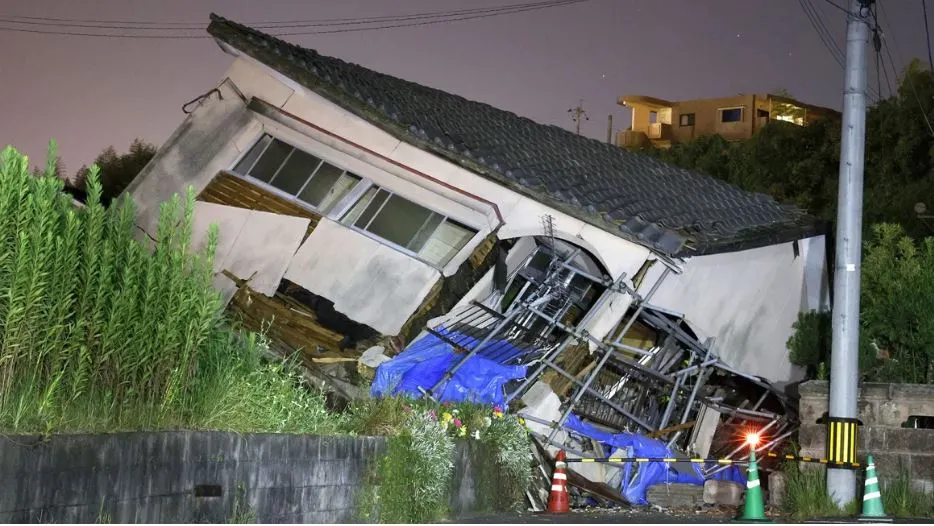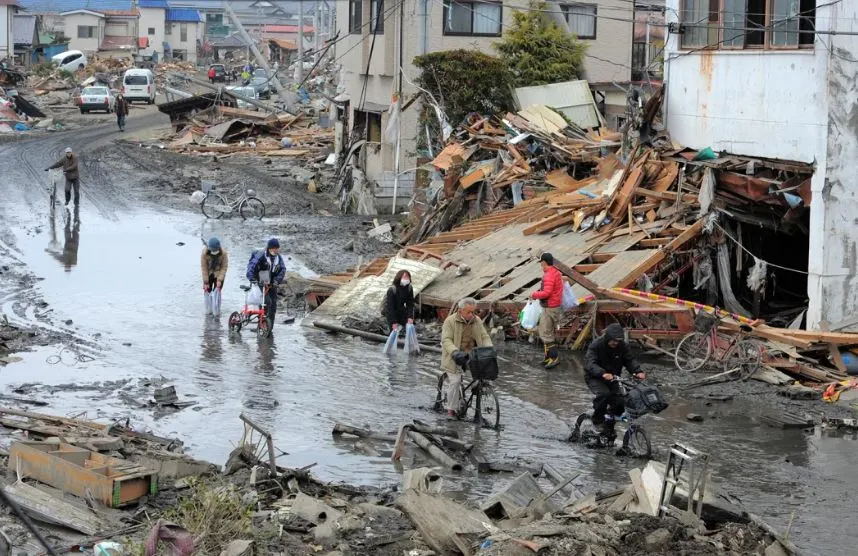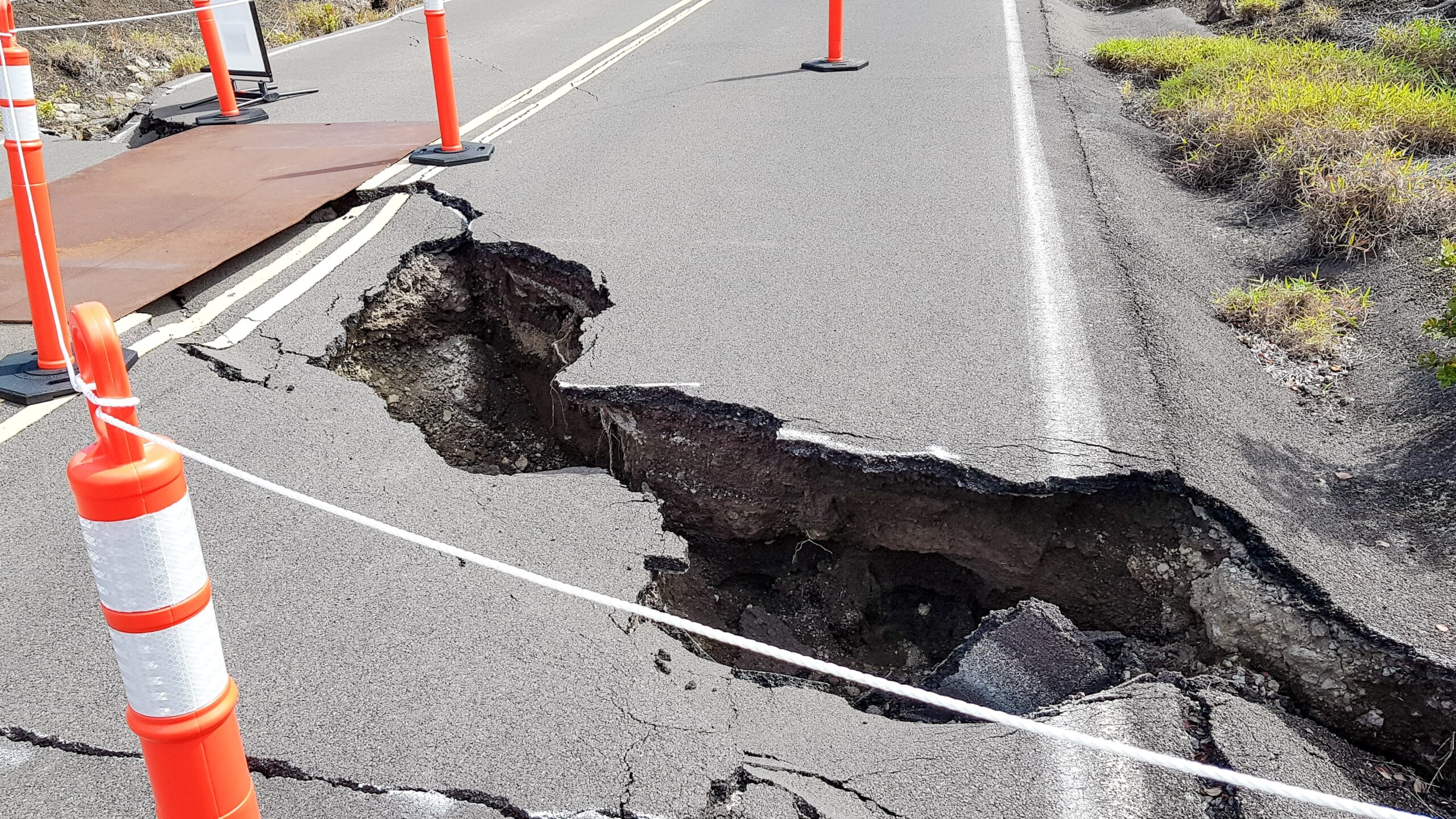Japan sits on one of the most active seismic zones in the world. A Japan earthquake can strike at any moment, causing widespread devastation. The country is constantly on high alert, aware of the seismic risks it faces. With its location on the boundaries of four tectonic plates, Japan is particularly vulnerable to significant seismic events. The threat of a major earthquake is ever-present, especially with the looming possibility of a Nankai Trough event. This raises a crucial question: How prepared is Japan for the inevitable?

Understanding Japan’s Seismic Landscape
Japan’s geographical position makes it one of the most earthquake-prone countries globally. The nation lies at the intersection of the Pacific, Philippine Sea, Eurasian, and North American tectonic plates. These tectonic plates are in constant motion, creating immense pressure that is released through seismic activity. A Japan earthquake can occur when this pressure is suddenly released, often leading to devastating consequences.
The Nankai Trough, a 700-kilometer-long subduction zone, is one of the most significant seismic threats to Japan. This zone, where the Philippine Sea plate is slowly sliding beneath the Eurasian plate, has been the site of numerous powerful earthquakes throughout history. Scientists believe that another major earthquake in this area is inevitable. However, predicting when and where a Japan earthquake will strike remains a complex and uncertain task.
The Nankai Trough: A Looming Threat
The Nankai Trough has a long history of producing some of Japan’s most devastating earthquakes. The most recent major events occurred in 1944 and 1946, both registering magnitudes of 8.1. These earthquakes caused widespread destruction, leaving thousands dead and many more injured. The Japanese government estimates a 70% to 80% chance of another Nankai Trough earthquake occurring within the next 30 years. Such an event could trigger a massive tsunami, further amplifying the disaster’s impact.
Despite the uncertainty surrounding the timing of a Nankai Trough earthquake, the Japanese government has not taken the threat lightly. Extensive disaster planning is in place to prepare for the potential catastrophe. Japan has implemented rigorous building codes, designed to ensure that structures can withstand significant seismic forces. These measures have already proven effective in reducing casualties and damage during smaller quakes.
However, some experts argue that the focus on the Nankai Trough may overshadow other seismic risks in the country. While the Nankai Trough is undoubtedly a major concern, it is not the only seismic hazard Japan faces. Earthquakes can and do occur in other parts of the country, often with little warning. The emphasis on the Nankai Trough may create a false sense of security in other regions, leading to inadequate disaster preparedness.

Japan’s Earthquake Preparedness: A National Priority
Japan has long recognized the need for robust earthquake preparedness. The country’s vulnerability to seismic events has driven a culture of safety and preparedness that permeates every aspect of society. From the design of its infrastructure to the conduct of regular drills, Japan has made disaster planning a national priority.
One of the most critical aspects of Japan’s preparedness strategy is its stringent building codes. These codes are among the most advanced in the world, requiring structures to be designed and constructed to withstand significant seismic forces. As a result, buildings in Japan are far more resilient to earthquakes compared to those in many other countries.
In addition to building codes, Japan has also invested heavily in early warning systems. These systems can detect the initial signs of an earthquake and provide precious seconds of warning before the shaking begins. This early warning can be crucial in allowing people to take cover and reducing the risk of injury or death.
Moreover, public education plays a vital role in Japan’s earthquake preparedness. From a young age, children are taught how to respond during an earthquake. Regular drills in schools and workplaces ensure that everyone knows what to do when the ground starts shaking. This widespread knowledge and readiness are key factors in Japan’s ability to minimize casualties during a Japan earthquake.
The Role of Tectonic Plates in Japan’s Seismic Activity
The movement of tectonic plates is the primary driver of Japan’s seismic activity. The country’s position at the convergence of four major tectonic plates makes it particularly susceptible to earthquakes. As these plates interact, they build up stress that is eventually released in the form of seismic activity.
The subduction of the Philippine Sea plate beneath the Eurasian plate at the Nankai Trough is one of the most significant tectonic interactions in Japan. This subduction process is responsible for the frequent and sometimes devastating earthquakes that occur in this region. However, it is not the only tectonic interaction that poses a threat. The entire country is crisscrossed by numerous fault lines, each with the potential to produce a significant earthquake.
Understanding the movement of tectonic plates is crucial for assessing the seismic risk in Japan. Scientists closely monitor these movements, using a network of sensors to detect shifts in the Earth’s crust. This data is used to create models that predict where and when a Japan earthquake might occur. While these models are not foolproof, they provide valuable information that can guide disaster planning and preparedness efforts.
Balancing Focus Between Nankai Trough and Other Seismic Risks
While the Nankai Trough is a significant concern, it is essential not to overlook other seismic risks in Japan. The country’s focus on the Nankai Trough has led to substantial investments in disaster planning for that region. However, other areas of Japan also face considerable seismic risks, and these areas may not receive the same level of attention and resources.
For example, the Noto Peninsula on Japan’s west coast has experienced damaging earthquakes in the past. However, because it is not located near the Nankai Trough, it may not be seen as a high-priority area for earthquake preparedness. This could lead to gaps in disaster planning, leaving residents in these regions more vulnerable when an earthquake does occur.
Experts argue that a more balanced approach is needed, one that considers the seismic risks across the entire country. While the Nankai Trough undoubtedly deserves attention, other regions also need to be prepared for the possibility of a Japan earthquake. This means ensuring that all parts of the country have access to the resources and information needed to protect themselves.
Public Perception and Preparedness in Japan
The Japanese public is acutely aware of the seismic risks they face. The memory of past disasters, such as the 2011 Tohoku earthquake and tsunami, remains fresh in the national consciousness. These events have left deep scars on the Japanese psyche, reinforcing the need for constant vigilance and preparedness.
When a Japan earthquake strikes, the immediate response from the public is one of action. People know what to do and how to protect themselves. This high level of preparedness is a testament to the country’s extensive disaster planning efforts. However, it is also a reflection of the pervasive fear that another major earthquake could strike at any time.
Despite this preparedness, there are concerns that the focus on the Nankai Trough could lead to complacency in other parts of the country. If people believe that the threat is concentrated in one area, they may not take the necessary precautions elsewhere. This could result in a lack of preparedness in regions that are equally at risk of experiencing a Japan earthquake.
The Future of Japan’s Earthquake Preparedness
Japan’s commitment to earthquake preparedness is undeniable. The country has made significant strides in reducing the impact of seismic events through rigorous building codes, early warning systems, and public education. However, as the risk of a Nankai Trough earthquake looms, Japan must ensure that its preparedness efforts are comprehensive and inclusive of all regions.
The future of Japan’s earthquake preparedness will likely involve continued investment in technology and infrastructure. Advances in seismic monitoring and early warning systems could provide even greater protection against the impact of earthquakes. Additionally, ongoing public education efforts will be crucial in maintaining a high level of preparedness across the country.
However, it is also essential for Japan to remain flexible in its approach. Seismic risks are not static, and new threats can emerge as tectonic plates continue to shift. Japan must be prepared to adapt its disaster planning strategies to address these evolving risks. This means not only focusing on the Nankai Trough but also ensuring that other regions are equally prepared for a Japan earthquake.
Conclusion
A Japan earthquake is not a question of if, but when. The country’s position on active tectonic plates makes it one of the most seismically vulnerable nations in the world. While the threat of a Nankai Trough earthquake is significant, it is crucial not to overlook other seismic risks. Japan’s commitment to earthquake preparedness is strong, but it must be balanced and inclusive of all regions.
Through continued investment in technology, infrastructure, and public education, Japan can further strengthen its resilience against earthquakes. The country must remain vigilant, always ready to respond to the inevitable. By doing so, Japan can protect its people and minimize the impact of the next major earthquake.
Click here to read our latest article Inflation Outlook Hits Record Low

